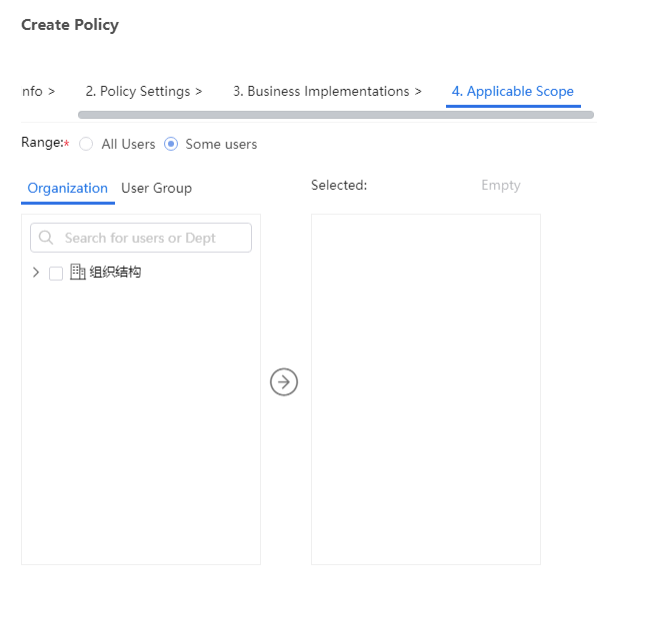AnyShare Management Console enables customized content recommendations for individuals, organizations, and business needs through visual management of features, strategies, and scenarios.
Personalized Features
Under [Personalized Recommendation] > [Personalized Features], administrators can manage features through creation, editing, and deletion operations, configuring recommendation characteristics for different targets.
Click [+New Feature] to access the configuration page.
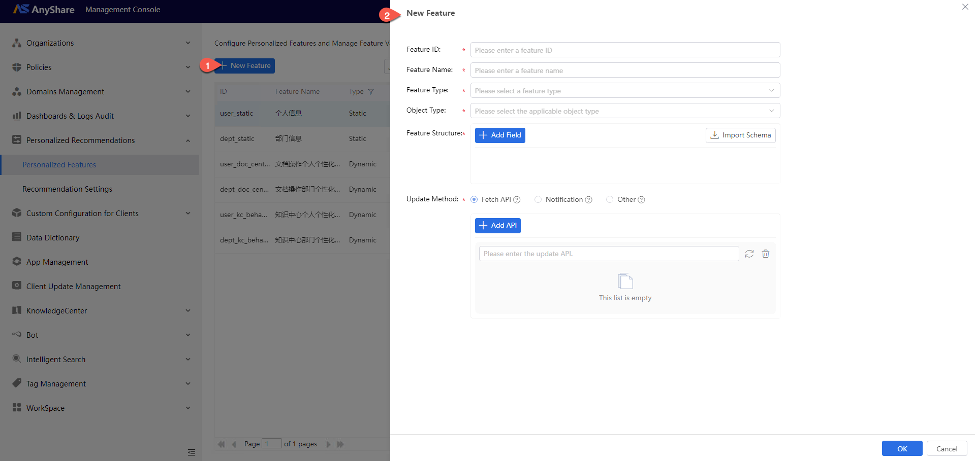
Key configuration items include:
-
- Feature ID: Unique identifier for system recognition and API calls.
- Feature Type: Static (low-update, fixed) or Dynamic (frequent updates).
- Object Type: User-level, department-level, or dual-application features, limiting subsequent value-setting scope.
- Feature Structure: Supports String, Numeric, Boolean, Object, and array field types.
- Update Method (determines how feature data maintains timeliness):
- API Pull: System-initiated external API calls for low-frequency/batch updates.
- Message Notification: Real-time updates via external system-triggered events.
- Other: System-maintained updates for internally controlled/complex scenarios.
After configuration, choose the desired feature and click [Set Value] to assign values to users/departments per the selected target type.
Recommendation Settings
Under [Personalized Recommendations] > [Recommendation Settings], administrators configure application scenarios and strategies.

› Create Recommendation Scenario
Click [+New Scenario] to configure Scenario ID/Name/Classification (e.g., AnyShare Document Center/Homepage recommendations).
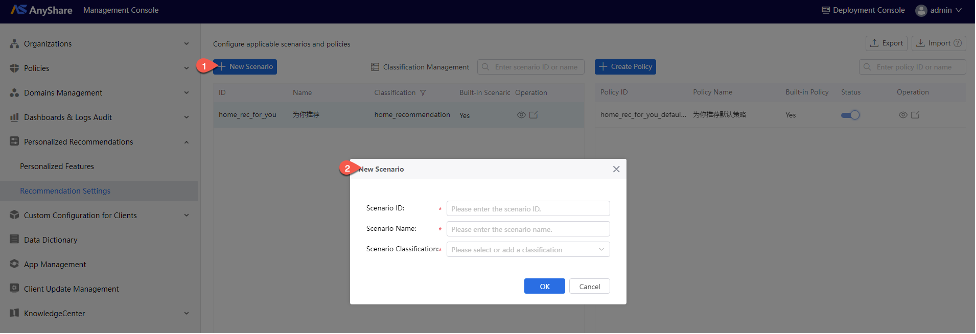
› Create Recommendation Policy
Select a scenario and click [+New Strategy] to configure Basic info (Strategy ID/Name), Personal/System-filtered features with normalized weights (sum=1, click "" to view detailed feature parameters under each dimension) and Large Language Model (LLM) selection and applicability scope.
Figure-Configure recommendation policy

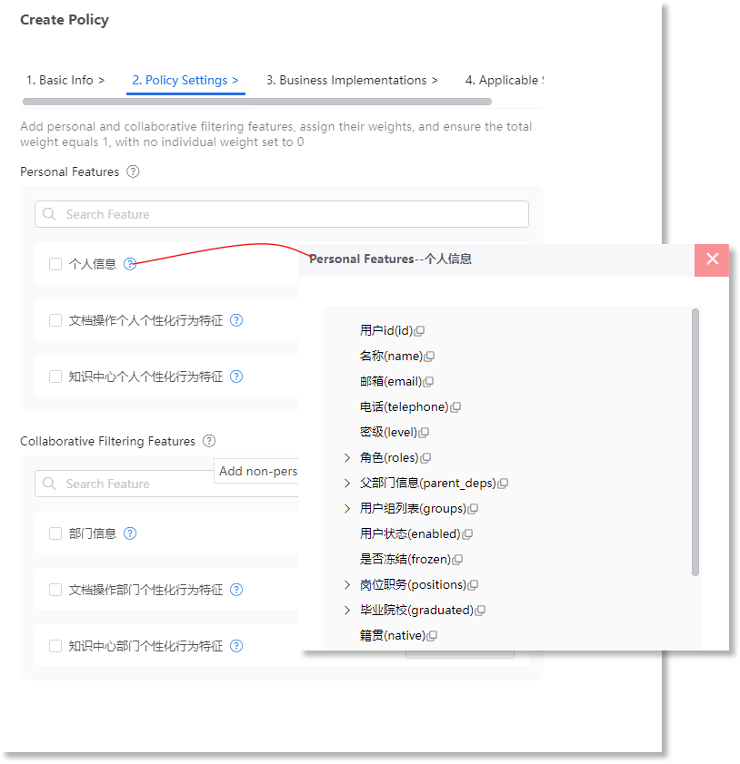
Key configuration items include:
-
- Personal Features: User-specific attributes (ID, name, behavior data) for preference inference.
- Collaborative Filtering Features: User-group interaction patterns for similarity-based recommendations.
- Weight Allocation: Adjusts feature contributions to recommendations.
Figure-Configure business implementations
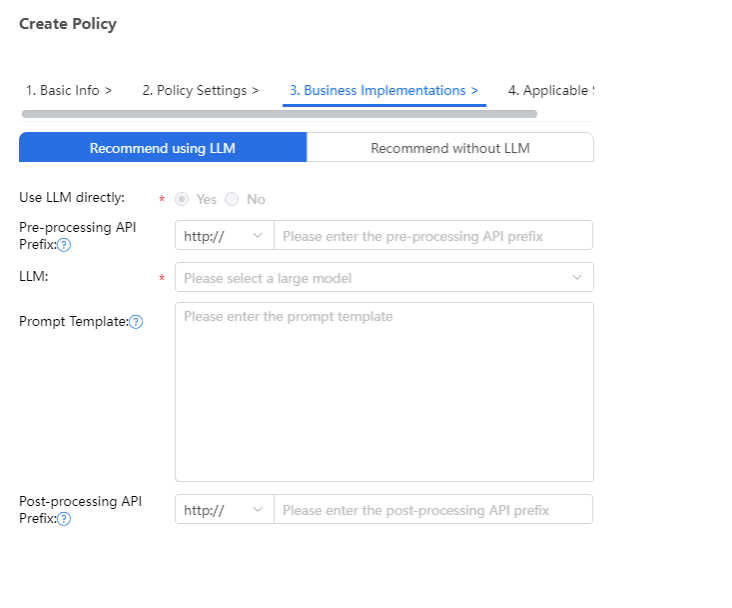
Key configuration items include:
- Recommend using LLM: When selected, the strategy leverages pre-trained large language models (LLMs) to generate semantically aware recommendations. Requires configuration of:
- Pre-processing API Prefix: Prepares recommendation scenarios, strategies, and other input parameters for LLM consumption.
- LLM: Large Language Model used for recommendation generation
Note: Agents unsupported in this version.
-
- Prompt Template: Guides LLMs using predefined templates populated with dynamic user data (e.g., interests, behaviors) to generate personalized recommendations, enabling the model to interpret user characteristics such as long-term interests, short-term behaviors, and active time periods.
- Post-processing API Prefix: Formats LLM outputs with justification for final delivery.
- Recommended without LLM: Relies on traditional logic to deliver recommendations via business processing APIs.
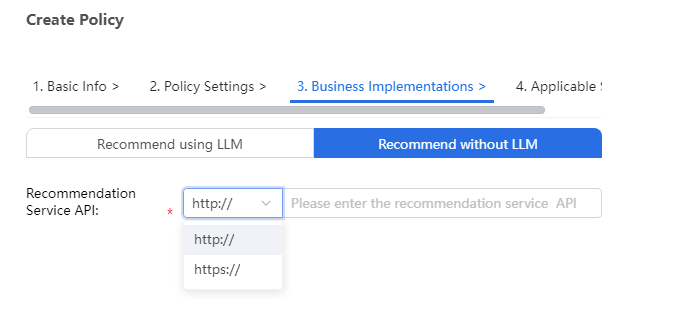
- Applicability Scope: Defines the organizational structure where the strategy takes effect.
